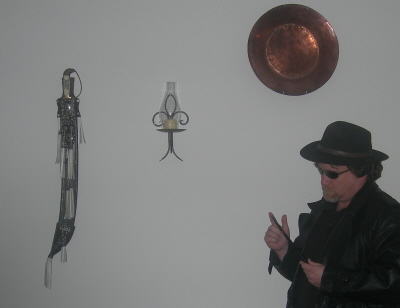|
About This Author
Come closer.
|
Carrion Luggage
Carrion Luggage
![Traveling Vulture [#2336297]
Blog header image](http://www.InkSpot.Com/main/trans.gif) ![Traveling Vulture [#2336297]
Blog header image Blog header image](/main/images/action/display/ver/1741870325/item_id/2336297.jpg)
Native to the Americas, the turkey vulture (Cathartes aura) travels widely in search of sustenance. While usually foraging alone, it relies on other individuals of its species for companionship and mutual protection. Sometimes misunderstood, sometimes feared, sometimes shunned, it nevertheless performs an important role in the ecosystem.
This scavenger bird is a marvel of efficiency. Rather than expend energy flapping its wings, it instead locates uplifting columns of air, and spirals within them in order to glide to greater heights. This behavior has been mistaken for opportunism, interpreted as if it is circling doomed terrestrial animals destined to be its next meal. In truth, the vulture takes advantage of these thermals to gain the altitude needed glide longer distances, flying not out of necessity, but for the joy of it.
It also avoids the exertion necessary to capture live prey, preferring instead to feast upon that which is already dead. In this behavior, it resembles many humans.
It is not what most of us would consider to be a pretty bird. While its habits are often off-putting, or even disgusting, to members of more fastidious species, the turkey vulture helps to keep the environment from being clogged with detritus. Hence its Latin binomial, which translates to English as "golden purifier."
I rarely know where the winds will take me next, or what I might find there. The journey is the destination.
November 4, 2025 at 8:28am November 4, 2025 at 8:28am
| |
Here's something fairly recent from PopSci, though its subject is a century old:
I mean, technically, it cured wrinkles and leukemia. Along with that pesky condition called "living."
William Bailey promised to cure anything that ailed you. “Just a tiny bottle of apparently lifeless, colorless, and tasteless water” was, he advertised in a 1929 pamphlet for his product, Radithor, “the greatest therapeutic force known to mankind.”
Oh, sure, we're horrified (or amused, or both at the same time) now, but think about all the panaceae being pushed and promoted by hucksters now. While they might not be as deadly as radioactive water, I promise you, in 100 years, if any humans are still around then, they'll be looking back at us and going, "Horse paste? Seriously?"
Hell, some of us are already doing that.
The life-threatening (heart disease, leukemia), embarrassing (impotence, flatulence), and annoying (poison ivy, wrinkles) could all be remedied with Radithor’s main ingredient, “internal sunshine”—that is, highly radioactive radium isotopes.
This is how pseudoscience works in its unholy union with marketing. It was effective then. It's effective now. The classic example is "snake oil," but that's unfair; snake oil  actually had some benefit (just not as advertised at the time, and only if it's actual snake oil). actually had some benefit (just not as advertised at the time, and only if it's actual snake oil).
Radium “was mainstream, and it became mainstream because the radium industry wanted this to happen,” explains the historian of science and technology. “Science and commerce are so intertwined that we cannot really separate them,” she says. It is a phenomenon that, like the radioactive elements of Radithor, remains dangerous today, if not handled with care.
People want to believe in miracle cures, and desperate people will try anything. Remember Laetrile?  This belief is what allows pseudoscience to flourish. It's also related to conspiracy "theories:" people want to think they have the answers, that they know better than these so-called "experts." This belief is what allows pseudoscience to flourish. It's also related to conspiracy "theories:" people want to think they have the answers, that they know better than these so-called "experts."
They do not.
The story of Radithor’s best-known victim has also endured: In 1927, Eben Byers, a wealthy and well-known Pittsburgh businessman, broke his arm and a physician recommended Radithor.
It does not help that not all doctors are equally competent. They are, of course, also human. Except for the AI ones. You can't trust those, either.
Eben Byers hadn’t been fooled into consuming radium; every bottle of Radithor proudly announced itself as “CERTIFIED Radioactive Water.” Instead Byers had been caught in the intersection where fledgling scientific understanding met an untapped commercial market.
Want to see the latest incarnation of that? 
I'm not saying that it's on the same level of hazard as radium water, but it's still using poorly-understood science to play on peoples' fears and get money for it.
Marie and Pierre Curie discovered radium in 1898 and spent the first decade of the new century refining the method of isolating the element from ore.
No, I don't blame the Curies.
While acknowledging that radium therapies were not yet fully accepted by the scientific community, the magazine noted “there is a growing belief that radium emanation does have a definite place in medical treatment.”
And of course, belief means it's true. Right?
Yes, eventually, radioactivity did find a place in medical treatment (the article mentions this at the very end). But that was after years, even decades, of studies and development and scientific understanding. Not to mention how radiation quickly went from miracle cure to movie villain, what with, you know, atomic bombs and whatnot.
The takeaway here should not be "you can't trust science." It should be a healthy skepticism, even outright rejection, of hucksters using pseudoscience, fear, and hope to discredit actual science and make money from peoples' ignorance. |
© Copyright 2025 Robert Waltz (UN: cathartes02 at Writing.Com). All rights reserved.
Robert Waltz has granted InkSpot.Com, its affiliates and its syndicates non-exclusive rights to display this work.
|


![Traveling Vulture [#2336297]
Blog header image Blog header image](/main/images/action/display/ver/1741870325/item_id/2336297.jpg)